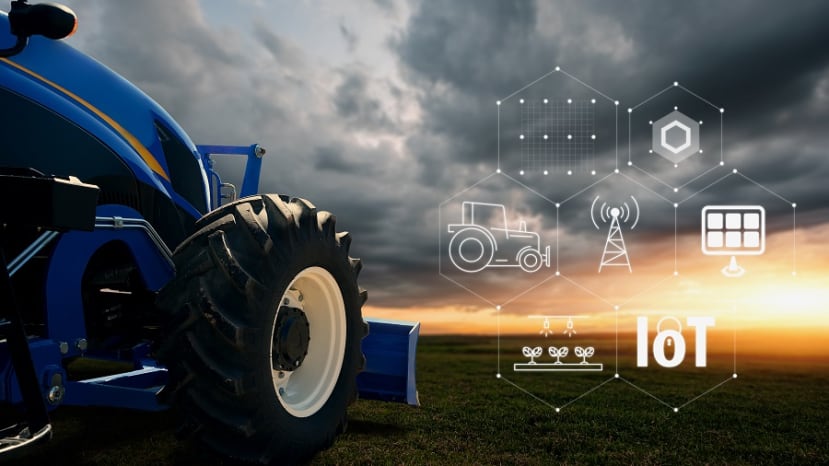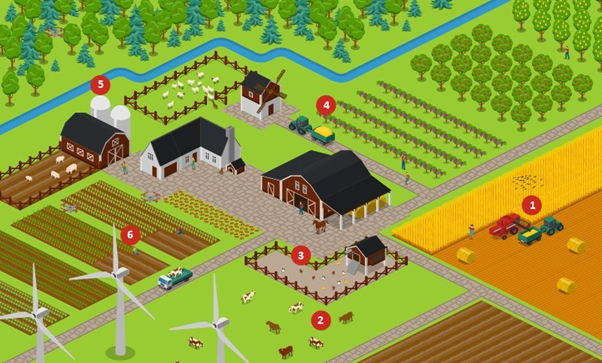Utilising the Potential of IoT in Agriculture through Smart Farming
Follow articleHow do you feel about this article? Help us to provide better content for you.
Thank you! Your feedback has been received.
There was a problem submitting your feedback, please try again later.
What do you think of this article?
Our worldwide population is projected to reach an amazing 8.6 billion people by 2030 and, perhaps, up to 9.8 billion people by 2050 as we go further into the 21st century.
With a big growth in population comes a greater need for food, which our current farming practices may find difficult to supply. As environmental problems such as climate change, water shortages, and declining arable land worsen, we also have to deal with them.
The development of what we now refer to as "smart farming" was sparked by the incorporation of IoT technology into farming as a means of overcoming these difficulties.
An innovative strategy known as "smart farming" uses the Internet of Things to improve and modernise agricultural practices. IoT sensors, wireless communication networks with cutting-edge antennas, cloud computing platforms, and data analytics tools are just a few of the cutting-edge technologies that are mixed together in this strategy. These components improve farming operations in conjunction with automation.
These technologies provide a more effective, accurate, and productive agricultural environment by providing real-time crop health monitoring, precise resource application, and predictive analysis of farming circumstances.
The infographic that follows gives six real-world examples of smart farming in action, each showcasing a different IoT use case. Traditional farming is being transformed into a technology-led, data-driven industry by these cutting-edge technologies.
- Yield Monitoring: This combined harvester uses IoT sensors to monitor yield per square metre and sends the data in real-time through a cellular antenna to a cloud server. Utilising tactics that are optimised based on precise productivity data, this invention revolutionises harvesting.
- Livestock tracking: RFID or NFC tags that are individually associated with a specific cow track vital signs including heart rate, body temperature, and eating habits. This surveillance system guarantees quick health treatments, enhancing the general welfare of animals.
- Environmental Monitoring: Using a Wi-Fi antenna (124-8717) , IoT sensors within this chicken coop keep track of important environmental factors including temperature, humidity, and air quality. Farmers can maintain the best circumstances for the welfare and egg production of their poultry thanks to technology.
- Precision Agriculture: Zigbee antenna (202-4089) in the orchard that are linked to IoT sensors keep a tight eye on elements including soil moisture, air temperature, and solar exposure. This exact observation enables the best irrigation and nutrient delivery, resulting in healthier produce and greater harvests.
- Grain Storage Management: This smart silo's IoT sensors keep an eye on the amount, temperature, and humidity of the grain. The information gathered and communicated via a LoRa antenna aids in spoiling prevention, effective stock management, and profit-maximizing timing of grain sales.
- Aerial Crop Monitoring: Drones that are fitted with IoT sensors and cameras scan the fields to collect information on the health of the plants, the state of the soil, and the presence of pests. The drones send high-resolution pictures and data for analysis using a Wi-Fi antenna, enabling prompt interventions for optimum crop development.
Smart farming has advantages that extend far from the fields. Optimised resource management and accurate soil and plant health monitoring benefit farmers by increasing crop yields and lowering expenses. Automation increases productivity and safety for food processors and guarantees the product's quality and safety, increasing consumer satisfaction.
Supply chain management is simplified for distributors and retailers, who benefit from traceable, safe goods from farm to table that increase confidence and lower the possibility of contracting a foodborne disease.
Food is safer and better for consumers, there is less waste, and farming is done in a more sustainable way. Even urban farming and community-supported agriculture programmes are thriving thanks to the help of smart agriculture technology, enabling more access to fresh, regional products.
As a reputable supplier of IoT solutions, Siretta has a track record of addressing use cases related to smart farming. Our selection of IoT solutions is made to support several applications, including those in the agriculture industry.
Our top-notch, dependable antennas are made to improve your connection solutions, whether you're working on a smart farming application or another cutting-edge IoT project. Alternatively, take a look at the RF Antennas in Siretta's catalogue here.



